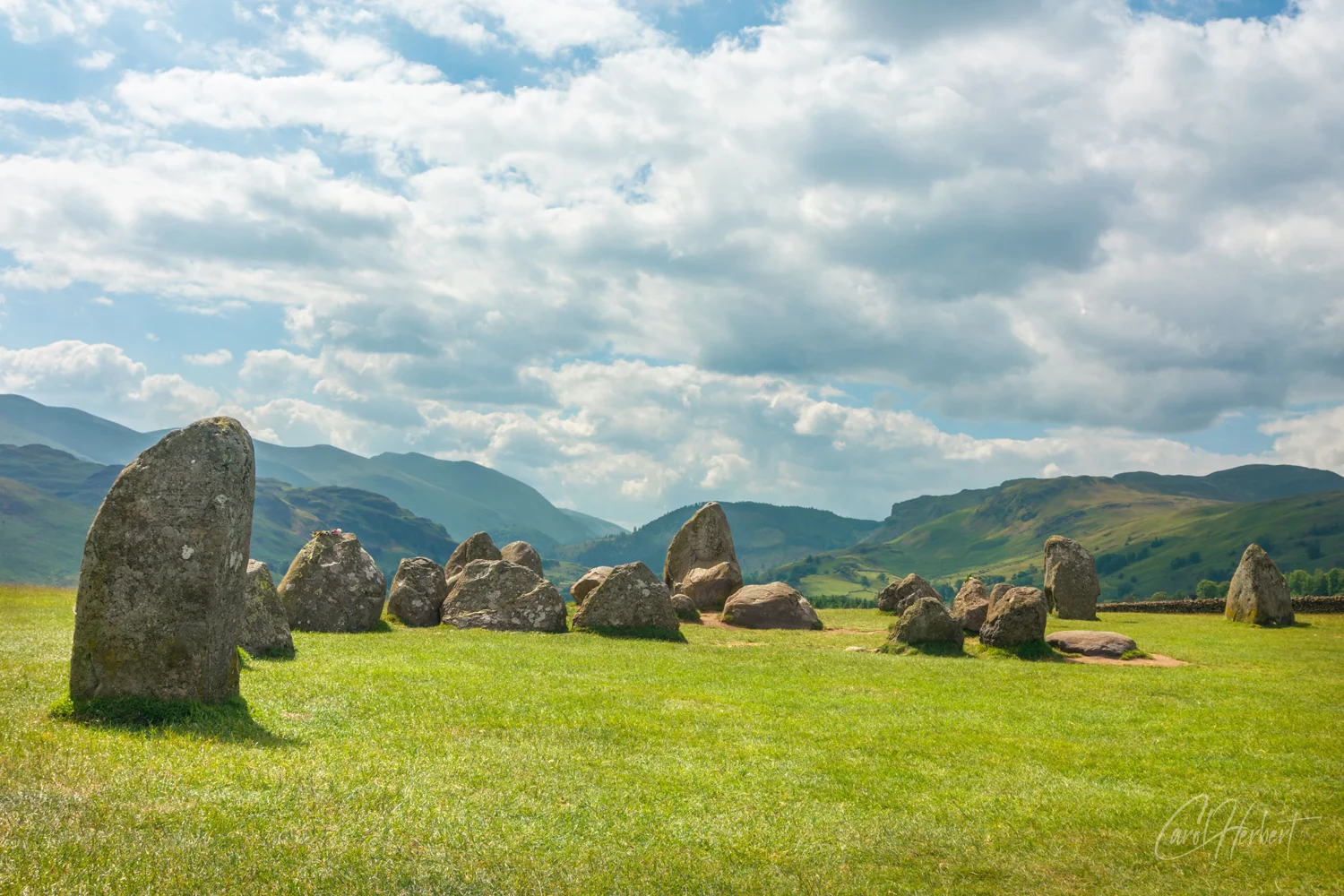




Bring stunning photography into your space with this high-quality 12" x 8" Castlerigg Stone Circle Keswick art print, designed for exceptional detail and longevity.
Printed on lustre photographic paper, it features a semi-matt finish with a subtle, speckled sheen that minimizes glare - ideal for bright rooms or spaces with direct lighting.
Includes a 1/4-inch white border for a refined, ready-to-frame presentation.
Castlerigg Stone Circle, located on a low hill near Keswick in Cumbria, is one of Britain's earliest stone circles, dating back 4,000 to 5,000 years to the Neolithic period. The circle consists of 38 stones, some as tall as 3 meters (10 feet). Its purpose remains speculative, but it likely served ceremonial and astronomical functions, marking significant solar and lunar events crucial for Neolithic agricultural societies.
The construction of Castlerigg would have required significant community effort, reflecting sophisticated social structures. The stones, sourced from nearby areas, were transported and erected with precision, showcasing the builders' skills and communal effort.
Surrounded by the peaks of Skiddaw, Blencathra, and Helvellyn, Castlerigg offers stunning panoramic views that may have held spiritual significance for its creators.
In 1882, Castlerigg was among the first sites protected under the Ancient Monuments Protection Act, highlighting its importance to Britain’s archaeological heritage.
Explore other images from my Castlerigg Art Prints and Cumbria Art Prints Collections.
Bring stunning photography into your space with this high-quality art print, designed for exceptional detail and longevity. Choose from three premium paper finishes to suit your lighting and display needs:
Each Castlerigg Stone Circle Keswick art print includes a 1/4-inch white border by default, providing a refined, ready-to-frame presentation. Need a custom border size? I offer tailored options upon request to match your specific framing or display preferences.
| Available Sizes | A4, 12" x 8", 18" x 12", 24" x 16" |
| Paper Finishes | 230 μm Fujifilm Crystal Archive DPII Lustre 240 μm Fujifilm Crystal Archive DPII Gloss 308gsm Hahnemühle Photo Rag |
| Printing Method | Digital Laser / 12 colour UltraChrome Pro inkset |
| Care Instructions | Handle with Clean, Dry Hands - Oils and dirt from your fingers can damage the surface. Cleaning: Lustre: Dust Gently with a Soft Cloth - A clean, dry microfibre cloth can remove dust without scratching the surface. |
| Eco Credentials | Printed on demand to prevent wastage. |
Castlerigg Stone Circle Keswick Photographic wall art prints are printed to order and usually shipped within 1-2 business days. Please allow a further 2-3 days from the despatch date to receive your item (not including weekends or bank holidays).
Prices shown are inclusive of delivery to Mainland UK. Shipping to other available areas calculated at checkout.
Please check out the Delivery & Returns and Free Shipping pages for futher information.There are no reviews for this item yet, but here is just a small selection of what other happy Real World Art customers have to say!
Loved this image of our wedding day and was appropriate for our anniversary too...
Today I had the pleasure of picking up a framed and mounted print of 'Dandelion Clock' its absolutely stunning. The clarity is just crazy!! Now to decide where to put it!! Really beautiful work.
The absolute perfect image, promptly dispatched, swiftly received. Highly delighted customer. Thank you very much indeed Carol.
Excellent Print arrived - High Quality - Very professional - Correspondence with Carol was helpful & informative. Would highly recommend Realworldart.
The attention to detail is above expectations. I'm thrilled with what Carol has done, I will be purchasing again. Thank you
Thrilled to bits with the picture , better than expected